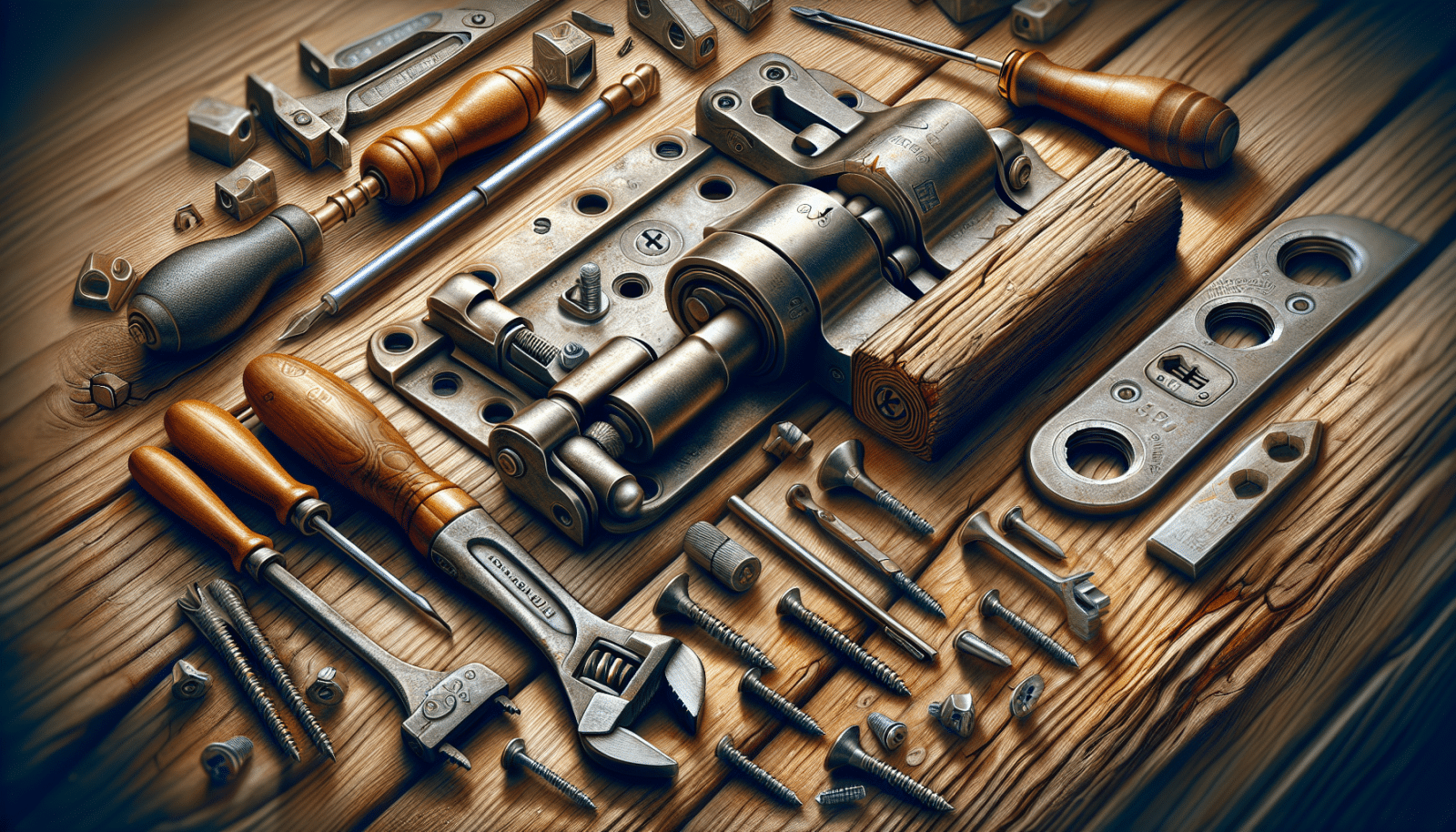At East Valley Handyman, I know just how frustrating pesky door issues can be for homeowners. From annoying creaks to unreliable locks, these problems can disrupt your daily routine. That’s why I’ve put together this comprehensive guide on door repair services to help homeowners fix these issues with ease. Whether you’re a DIY enthusiast or looking for professional assistance, this article is your go-to resource for smooth and secure doors.
Understanding Common Door Issues
Doors are an essential part of every home, providing security, privacy, and noise control. However, over time, they can develop various issues that require attention. You might notice a creaking sound every time someone enters or exits a room, or perhaps a door that doesn’t close quite right. These issues are not only annoying but can also compromise your home’s security.
One common issue is misalignment, often leading to a door that sticks or doesn’t latch properly. Misalignment can be caused by factors such as changes in humidity, wear and tear on hinges, or even foundational settling. Another frequent culprit is squeaky hinges, which can be fixed easily with a bit of lubricant or a minor hinge adjustment.
Whatever the problem might be, understanding the root cause is the key to fixing it effectively. In this guide, I’ll walk you through some DIY tips and explain when it might be the right time to call in the professionals.
DIY Solutions for Squeaky Hinges
Ah, the infamous squeaky hinge! It’s something we’ve all experienced at some point, and the good news is that it’s usually one of the easiest problems to fix. A squeaky door can be an unwelcome noise in an otherwise quiet home, but you don’t always need a professional to silence it.
One popular method to combat squeaky hinges is to apply a lubricant such as WD-40. Simply spray a small amount on the hinges, open and close the door a few times to work it in, and voilà! The sound should soon disappear. If you prefer a more natural approach, a bit of olive oil can also do the trick.
If lubing up the hinges doesn’t solve the problem, it might be time to remove the hinge pins, clean them, and then replace them. It’s a simple process that can make a big difference, ensuring your doors swing smoothly and quietly.
Dealing with Misaligned Doors
A door that’s out of alignment can be a nuisance, but it can also affect your home’s energy efficiency by letting in drafts. The first step in fixing misalignment is to examine the hinges. Over time, hinges can loosen, causing the door to sag or stick. Tightening the screws on both the door and the frame can often solve this problem.
In other cases, you might notice that the door rubs against the frame or the floor when you try to open or close it. Use a level to check if the door is adequately aligned, and if needed, make adjustments to the hinges. Sanding down areas that are rubbing can also help; just be cautious not to over-sand and create a new problem.
Remember, a well-aligned door not only functions better but also helps maintain the overall integrity of your home’s insulation.
Repairing or Replacing Door Locks
Door locks are critical for your home’s security, and it’s crucial to ensure they’re in good working condition. Over time, locks can wear out, keys can become damaged, or mechanisms might not function as they should. If your door lock is sticking or jamming, you might need to clean the inside mechanisms or lubricate them with graphite powder.
When locks are beyond repair, replacing them might be the best option. Luckily, swapping out a door lock isn’t as complex as it might seem. Make sure you select a lock compatible with your door’s pre-drilled holes to minimize additional installation work.
Whether you’re looking for something simple or a more advanced smart lock system, a functional lock is key to peace of mind.
Troubleshooting and Fixing Creaky Doors
When it comes to creaky doors, the noise can be truly maddening, echoing through the halls and disrupting your peace. First, identify the source of the creak. It’s often caused by hinges or the wood rubbing.
Once pinpointed, try tightening the hinge screws—sometimes, the door just needs a little adjustment. If the noise persists, inspect the door and frame for areas of friction. Sanding these spots gently can help smooth them out, eliminating those annoying squeaks.
Combining these fixes with regular maintenance can keep your doors operating quietly and efficiently for years to come.
Weatherstripping and Insulation Tips
Proper insulation at your door can make all the difference in maintaining a comfortable indoor climate. Weatherstripping is a fantastic way to keep unwanted drafts at bay. If you feel cold air seeping through your entry doors, it might be time to replace the weatherstripping.
Start by inspecting the existing weatherstripping for any visible signs of wear. Often, pieces that are cracked or missing adhesive can have a significant impact on your energy bills. Self-adhesive foam or rubber strips are easy to install and offer an effective solution.
By applying or upgrading weatherstripping, you’ll improve your home’s insulation and save on energy costs, making this small fix beneficial.
Enhancing Home Security with Door Upgrades
Your doors do more than provide access; they are a critical component of your home’s security. With advances in technology, upgrading your doors can enhance security features significantly. Consider installing stronger deadbolts or smart locks that provide robust protection.
Security enhancements don’t end with the locks, though. The door materials themselves matter. Solid-core doors offer much better protection than hollow options, deterring potential intruders. Adding a peephole or security camera can also be excellent deterrents.
When it comes to safeguarding your home, a few thoughtful upgrades can go a long way.
Understanding Door Materials and Maintenance
Doors come in various materials—wood, fiberglass, metal—each with unique characteristics and maintenance needs. Wooden doors offer a classic look but can require more upkeep to prevent warping and rot. Applying a fresh coat of paint or sealant periodically can help protect the wood.
Fiberglass doors are known for their durability and resistance to weather, making them an excellent choice for exterior doors. They typically require less maintenance than wood, needing only the occasional cleaning.
Metal doors provide strength and security but can develop rust if not properly maintained. Regular checking and treating with rust-resistant paint can preserve their condition.
When to Call a Professional
While many door problems can be tackled with a DIY approach, there are times when it’s best to call a professional. Significant misalignment, structural damage, or lock issues beyond a simple fix may require expert attention. Here in the East Valley, I’m readily available to assist with those trickier repairs.
Sometimes, the peace of mind that comes with professional service is worth it. I’ll ensure your doors not only function perfectly but also blend seamlessly with the aesthetics of your home.
Don’t hesitate to reach out when you need a trusted handymen’s expertise to get your doors back in top shape.
Conclusion
With a little know-how and some hands-on effort, door issues can easily be manageable. For those times when tackling it alone isn’t an option, East Valley Handyman is here to help. Contact me today, by phone # 480-500-6935 or Request a Free Quote.



